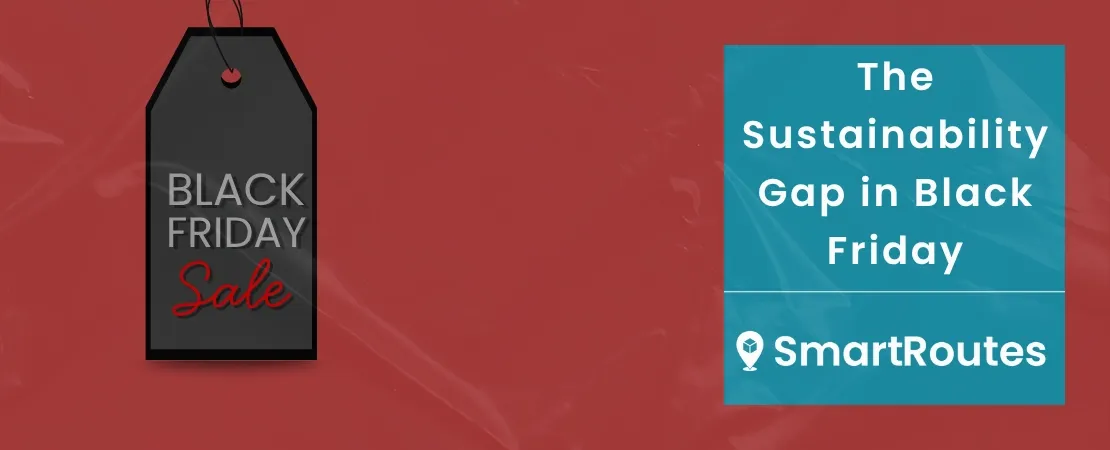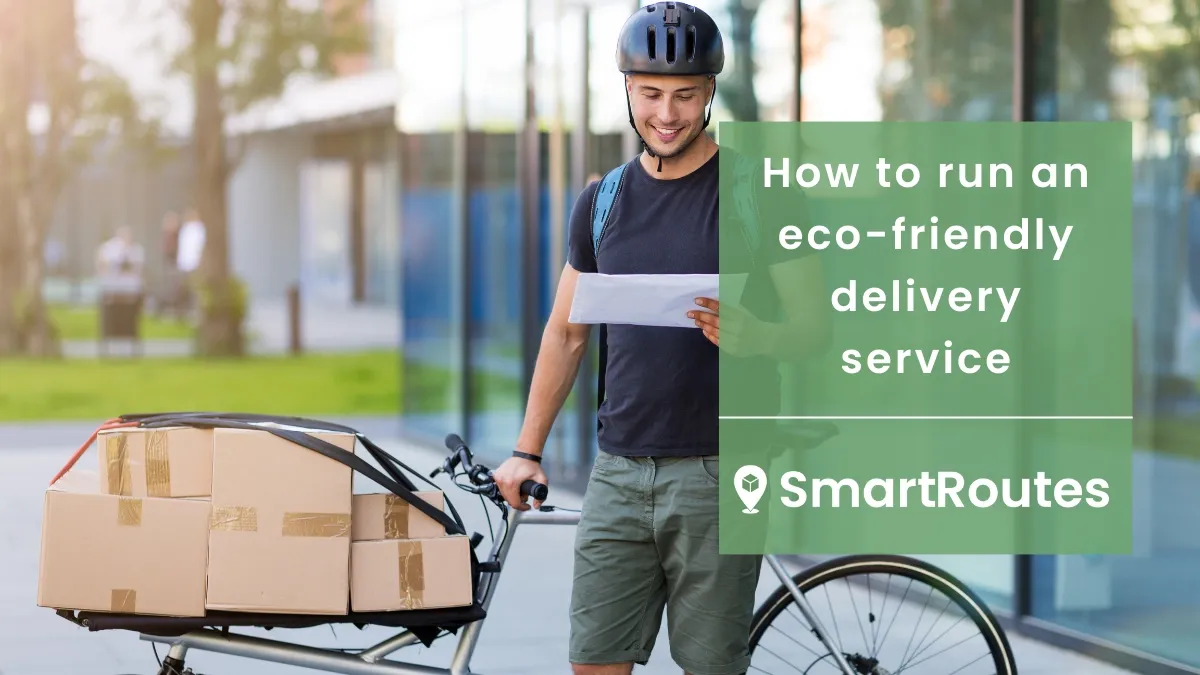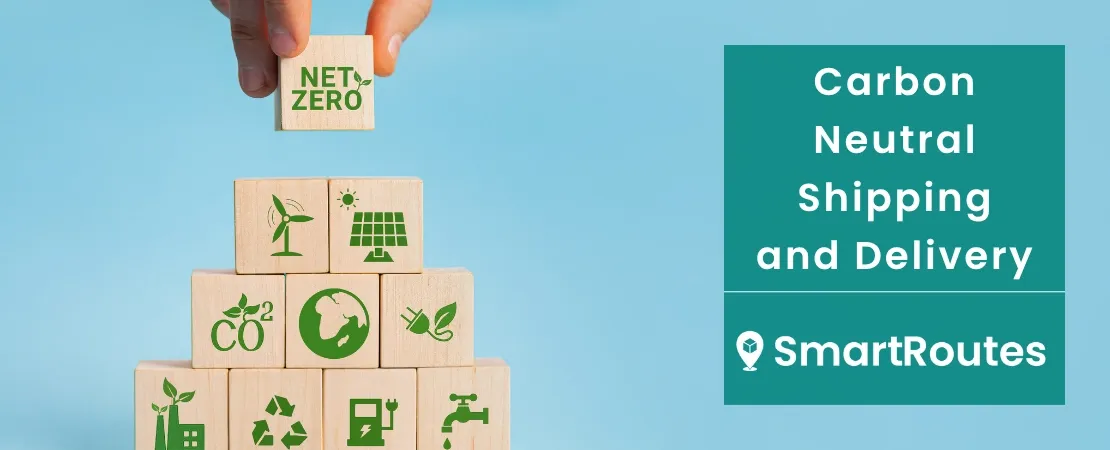The recent Intergovernmental Panel on Climate Change report made for sobering reading indicating that climate change is now at a tipping point where we all need to make real change if we are to avoid a spiralling situation. In this context carbon neutral shipping and delivery is an imperative for the last mile industry and anyone operating a fleet of vehicles.
The reality is that last mile delivery is part of the solution and if it is done correctly it will represent a huge reduction in carbon emissions compared to consumers getting in cars and driving to brick and mortar stores. Last mile delivery and shipping does emit a huge amount of carbon currently but this can be reduced significantly by making some simple changes. We will take a look at them shortly but first let us look at a few takeaways from the IPCC report.
Key takeaways from the IPCC report
1. Things are way worse than we thought
From the melting of the Greenland ice sheet to the destruction of coral reefs, climate related impacts are hitting the world at the high end of what modellers once expected. And much more quickly than previously assessed by the IPCC.
2. Loss and damage gets scientific backing
The IPCC clearly states that the observed impacts of climate change include "widespread adverse impacts and related losses and damages to nature and people."
3. Technology is not a silver bullet
According to the IPCC, the use of some technologies designed to limit warming or reduce CO2 could make matters worse rather than better.
There are also worries that machines that suck CO2 from the air could simply trigger the release of more warming gas.
4. Cities offer hope
While large cities are hotspots for climate impacts, they also offer a real opportunity to avoid the worst impacts of warming.
As cities continue to grow they can push for renewable energy, greener transport, and buildings. This could limit destructive climate impacts for millions.
5. The small window is closing fast
While this is a bleak assessment of the impacts now and in the future, the authors remain convinced that the worst impacts can be averted - if we act in time.
The IPCC says this opportunity for action will only last for the rest of this decade, as the final sentence in the new report underlines.
Many of you reading this will already have carbon reduction or sustainability commitments in your organization and the challenge now is to find ways to meet those commitments or exceed them.
In this article, you will learn what carbon-neutral delivery is, why it’s important, and how you can reduce carbon emissions in your delivery operations.
SmartRoutes Route Planning Software
Streamline your entire delivery process, all from one platform

What is Carbon Neutral Shipping and Delivery?
Carbon neutral means that you produce net zero carbon dioxide from your activities. Not so easy when your activities are deliveries of course so we are going to have to get inventive.
Carbon neutral shipping means shipping to end-customers without creating carbon dioxide emissions along the way. It entails carbon neutral packaging, zero tailpipe emissions, and depot management to reduce emissions.
The main causes of carbon emissions in last mile shipping and delivery include:
- Unnecessary driving
- Vehicle types
- Packaging
- Depot and storage units
- The production of vehicles and warehouses
- Wasteful processes or inefficiencies
If we are to play our part in protecting the environment we need to address all of these issues and drive our carbon footprint down as low as possible.
Solutions to Achieve Carbon Neutral Shipping
Route planning Software
The solution to unnecessary miles driven in last mile operations is better route planning technology. Simply put, this means using an algorithm to decide where vehicles need to go to get the work done and not relying on human logic, instinct or local knowledge. Route planning software syncs up with your ordering system or your customer database to pull down orders and create the optimal routes each day for your fleet. GPS tracking allows you to see where vehicles are actually going and helps you to see bigger picture operational improvements like delivery territories or highlight when customers haven’t been visited in a long time.
Alternative delivery vehicles
The last few years have seen the emergence of alternative delivery vehicles that are changing the way deliveries are done, particularly in urban areas. Cargo bikes, electric bikes and scooters, drones and eVans are all helping last mile operations move towards carbon neutrality. These vehicles have no tailpipe emissions, are quiet, quick and they can carry surprisingly large packages.
This change is very obvious on city streets but less obvious is the huge move to electric vehicles in the larger categories, even up to articulated trucks. They will drastically reduce tailpipe emissions in the coming years as fleets are replaced with electric or hybrid models. They are not without their issues of course, including the higher environmental impact of manufacturing these vehicles, but overall, they are part of the solution. More exciting perhaps is the nascent hydrogen vehicle market which has the potential to really transform emissions without the overwhelming need for metal mining to create batteries.
Eco-friendly delivery packaging
The 165 billion packages delivered each year in the US is the equivalent to 1 billion trees being chopped down. This needs to change. If you have received anything by home delivery recently you will have noticed the huge waste in each package. There needs to be a fundamental rethink of how to balance delivering packages intact with the need to reduce packaging on the part of last mile professionals. Consumers are already voting with their feet and supporting businesses that promote eco-friendly packaging. If eCommerce gets behind this initiative and drastically reduces packaging, accepting that some goods will be damaged, then we might be able to save the billions of trees worldwide that are needlessly felled to meet this demand. Culture change can come very quickly if some big retailers take the lead on this or governments crack down on wasteful packaging.
Future depots
There has been a lot of talk in last mile forums this year about pick-up, drop-off [PUDO] lockers in Poland and across Europe as a solution to last mile delivery. They have shown themselves to be highly effective in cutting down on delivery miles driven and in terms of better managing returns. PUDO lockers are a carbon reducing solution to last mile problems.
There has also been a lot of comment on micro-fulfillment centres in dispersed locations. These would form a network of smaller depots from which deliveries could be sent and they certainly would help to facilitate the wider array of delivery vehicles we talked about above.
The future of depots is unclear as it is a rapidly changing conversation but it is clear that large depots on greenfield sites are not the preference. There is an opportunity with micro-fulfillment centres to reuse older building stock in urban environments as the refit requirements would not be the same as for commercial or residential buildings. Depots need to recycle buildings, be smaller and be more dispersed to meet the demands of consumers while reducing the carbon footprint of new builds, concrete load and covering existing greenfield.
Culture change - industry and government
Lastly, and perhaps most importantly is the potential of culture change to affect the way the last mile operates. We have seen huge changes in what is understood to be delivery management recently. Drones, eBikes, PUDO, and reduced packaging all have the potential to slash carbon emissions. At the same time as consumers are not travelling to brick and mortar stores which cuts emissions further. This is transformative for the environment but these changes need to get even faster.
Culture change should be suggested and directed by governments and law makers but also by corporations and retailers that have genuine clout. Amazon, UPS, Royal Mail and others can set the agenda here and get others to follow suit.
Culture change - consumers
Of course the most important culture change agent is the consumer. If consumers demand eco-packaging and delivery by eBike to the local PUDO, then it is likely to happen. If they want someone to drive to them every evening with a McDonalds order then that is likely to happen. Directing culture change, even predicting it can be a fool's game but it is imperative that we try.
Carbon offsetting initiatives
Carbon offsetting is a way of compensating for the carbon emissions that take place in your operations and transport. It is necessary to offset what is emitted and to balance the books essentially so your company produces net-zero carbon dioxide. It also invests in ecosystems that protect the overall environment. Typically it means giving money to plant trees, or support ecosystem development.
As last mile operations and transport is still very heavily dependent on fossil fuels this is an important way to increase your eco-friendly credentials. Of course, it doesn't stop carbon emissions in the short term but it can be a good way to avoid the worst of your impact on the environment until you are able to other carbon neutral ways of operating.
If you're ready to begin planning and optimizing routes for your business, you can avail of a 7-day free trial with SmartRoutes or get in touch today and a member of our team will be in touch.
FAQ
1. What is carbon neutral shipping and delivery?
Carbon neutral shipping and delivery refers to a sustainable approach in the transportation industry where the total carbon emissions generated during the shipping process are offset by investing in environmental initiatives. This can include using eco-friendly transportation methods, employing energy-efficient technologies, and participating in carbon offset programs.
2. What technologies are commonly employed for achieving carbon-neutral shipping?
Common technologies for achieving carbon-neutral shipping include the use of alternative fuels such as electric or hybrid vehicles, smart route optimization algorithms that minimize fuel consumption, and the implementation of energy-efficient transportation modes. Additionally, companies may invest in sustainable packaging materials to further reduce their environmental impact.
3. How can routing software contribute to carbon-neutral shipping and delivery?
Routing software plays a crucial role in contributing to carbon-neutral shipping and delivery by optimizing delivery routes and minimizing the environmental impact of transportation. Route planners identify the most efficient and environmentally friendly routes for shipments. The optimization process helps reduce fuel consumption and greenhouse gas emissions by minimizing unnecessary detours, idling time, and inefficient routes. This not only lowers the carbon footprint of each shipment but also contributes to overall operational efficiency.
4. Are there any additional costs associated with opting for carbon-neutral shipping services?
The cost associated with carbon-neutral shipping services varies among providers. Some companies include these initiatives in their standard pricing, while others may charge a nominal fee. It's important to review the pricing details of each service to understand if there are any additional costs and to evaluate the overall environmental and cost benefits.
If you enjoyed this blog, you might also be interested in:




